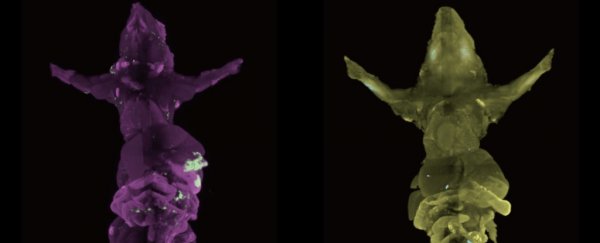Japanese researchers have developed a new imaging technique which makes mouse bodies and internal organs totally see-through. The innovative scanning method allowed the team to watch single cancer cells multiply, spread and form tumours inside the bodies of mice.
While it may look like something out of a horror movie, the new approach gives researchers a deeper understanding of how cancer attacks the body, which could open the door to more effective treatments.
"The study demonstrates the power of whole-body and whole-organ clearing and imaging with single-cell resolution," says Hiroki Ueda, one of the researchers from the University of Tokyo.
When it comes to stopping cancer in its tracks, early detection is key. While it only takes a few cells to trigger the growth and spread of a tumour, it is difficult to see these cancer cells when they are sparsely scattered throughout the body.
As a result, keeping track of the early stages of cancer metastasis - when cells multiply and spread to other organs - is challenging. But when the disease reaches this stage, it becomes harder to control.
To get a clearer picture of how cancer spreads throughout the body, the team took a chemical mixture called Clear Unobstructed Brain/Body Imaging Cocktail (CUBIC), which turns tissues and internal organs translucent. They tweaked the mixture so that cancer cells could be detected and viewed more easily.
When the researchers combined CUBIC with other scanning approaches, including confocal laser-scanning microscopy (CLSM) and light-sheet fluorescence microscopy (LSFM), the team were able to see single cancer cells in the liver, pancreas and intestines.
Applying the new technique to 13 mouse models with nine different cancer lines, the detailed images revealed the sizes, shapes and volumes of the cancer colonies. This provided the researchers with a snapshot of the different stages of metastasis, allowing them to track the spread of the disease step-by-step.
In one instance, the team watched pancreatic cells attack the liver before ravaging the rest of the mouse's abdomen.
When scanning the brain, they were able to pick up on individual cancer cells and their interaction with blood vessels in the brain. And over two weeks, the researchers observed cancer cells take over a healthy pair of lungs.
With the super detailed whole-body images, the researchers were able to uncover the secret steps involved in the spread of cancer. They found that cancer cells travel through the bloodstream and pass through blood vessel walls to reach another part of the body.
And to top it off, the team were also able to take a closer look at how anti-cancer drugs work in the early stages of metastasis, which could lead to the development of better treatments.
In addition to unravelling the mystery of how cancer spreads, the CUBIC protocol may be applied to other single cell based health conditions.
"We believe that same strategy will be applicable to other biomedical studies such as autoimmunity and regenerative medicine, in which the single-cell events play crucial roles," says Ueda.
The research was published in Cell Reports.
